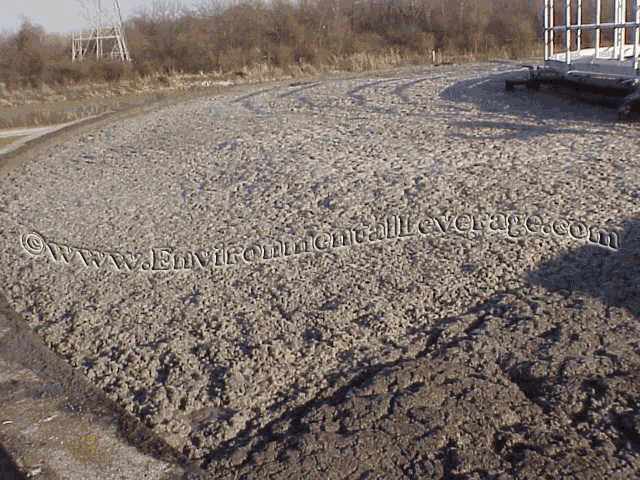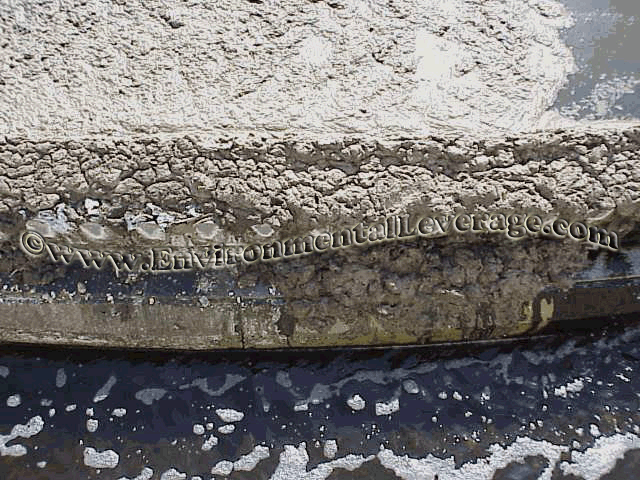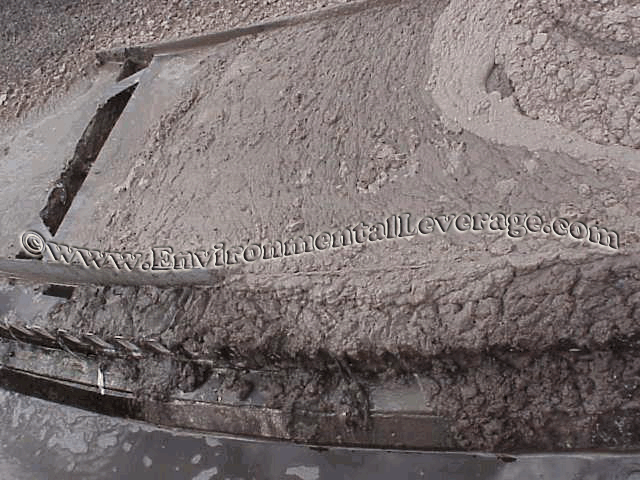Biological Products:
Bioaugmentation products for Wastewater applications in Papermills, Refineries, Chemical, Tanneries, Municipalities, Textiles, Steel, Agriculture, Animal feedlot, Gun Powder plant, Food and Beverage- Dairy Products, Orange Juice factory, Wineries, Cookie factory, Vegetable processing plant, Meat packing, Barbecue Restaurant, Aquaculture, Ornamental Ponds with algae , CAFO, Nursing homes, Military, Campgrounds, Universities, Regulatory agencies, River and Lake remediation
Lab Services:
Filamentous Identification Lab Service. One reason to identify filaments is to determine the filaments characteristics and then determine the type present. If the type is found out, a root cause can usually be associated with a particular filament. If the cause is known, then a correction can be made to alleviate problems. Chlorination is only a quick fix. Without process changes, filaments will grow back after chlorination. Wastewater Biomass Analyses and Cooling Tower Analyses also available
Training Materials:
Training is an integral part of any job. Not everyone is at the same level of training. Many people want beginning concepts and basics. Some need technical information or troubleshooting. Some want equipment, technology or process information. We have developed a full set of Basic training, Advanced training, Filamentous Identification the Easy Way as well as custom training CD's Manuals. We also provide hands-on training classes and soon will have an Online "E-University".
Audits and Consulting:
At Environmental Leverage® Inc., we have a team of experienced individuals who come into your plant with a fresh pair of eyes. The system is checked from influent to effluent. System optimization, equipment efficiency and operational excellence are key components explored. Key Benefits Equipment efficiency Total Cost of Operation reductions Reliability and safety An onsite audit is conducted to examine system parameters, process controls, and current monitor and control procedures. A physical walk-through is conducted, process flow diagrams are examined, previous design criteria are examined and current standard operating procedures are evaluated along with data logs.
|
Clarifier Optimization-sludge Judge TrialsLatest News!
What's New!
We have just added "Virtual Audits" to our capabilities. Check out our new Services. We are in the process of developing new courses for our ""Online E-University" in order to meet the needs of our global customers that cannot travel to our public classes.Visit our new website www.WastewaterElearning.com/Elearning
Keep in mind that a major portion of the bacteria is returned to the front of the plant. They do not stop growing in the clarifier. Many people cause most of the growth of filaments in the clarifier or create conditions that promote the growth of filaments by holding solids too long in the clarifier.
There are numerous control options that plants use to run their clarifier more efficiently.
Flow rates greater than the design overflow rate may result in an increase in the effluent solids content. This picture shows hydraulic overloading in a clarifier.
Monitor the influent and effluent suspended
solids concentration to determine percent solids removal efficiency.
Monitor the influent wastewater temperature. A decrease in temperature reduces the settling rate, which can result in a decrease in solids removal efficiency. An increase in the wastewater temperature can cause short-circuiting through the clarifier, reducing removal efficiency.
Monitor the settleability of the influent
solids.
Periodic volumetric settling tests using a settleometer will indicate a
change in the suspended solids
Monitor the secondary clarifier effluent pH. A drop in pH along with the presence of gas bubbles in the final settling tank usually indicates a septic sludge bed condition. Check for gassing and ashing.
Monitor the dissolved oxygen content of the influent and effluent of the clarifier. The dissolved oxygen content of the secondary clarifier effluent should be periodically monitored by taking samples from inside of the effluent weir. A large drop in dissolved oxygen from the influent to the effluent of the secondary clarifier indicates that the biological sludge activity is high in the clarifier and the water contains a substantial BOD demand. Operational corrections of the upstream biological process need to be adjusted in order to achieve final effluent BOD removal.
Maintain the effluent weirs in a clean and level condition. Weir maintenance is also critical, as well as the outer track. Algae on the weirs will significantly contribute to TSS and BOD in the final effluent. These need weekly maintenance, either spraying or cleaning with brushes. Algae can fix nitrogen if the environment is correct, and this can impact or give false reading as the efficiency of nitrification in the system. If excess BOD is still present or nutrients are in the system, algae or cyanobacteria can grow.
Proper preventative maintenance of the weirs can alleviate this. There are numerous companies that make automated cleaning systems that can significantly reduce manpower hours, increase efficiency in a system and cut back TSS and false BOD violations. The cost of the equipment is easily recaptured in ROI.
Weir Washer Automated Cleaning System (ACS)
**There are tons of companies that manufacture equipment to help you with cleaning the weirs. Check out your local supplier or the Internet. We are not affiliated with any particular company.
Monitor the sludge blanket depth and adjust blowdown frequency and/or rate accordingly. Measure the sludge blanket depth and adjust the blowdown rate to keep the blanket at the optimum depth. The optimum depth is that which produces the desired underflow concentration for the type of solids being separated but does not reduce the tank volume for the necessary flocculent settling rate. Best operation in terms of effluent clarity is typically attained with as small a sludge inventory (sludge bed) as possible. The sludge depth can be manually measured by such means as using a 'Sludge Judge", or automatically by sludge depth meters.
The volume of sludge to blowdown per unit time (gpm) to maintain the
sludge bed at the proper depth can be estimated from the influent and
effluent suspended solids, influent flow rate, and the underflow
concentration.
Periodic volumetric settling tests using a settleometer will indicate a change in the suspended solids characteristics, which may result in a reduction in solids removal efficiency. Such a change could require a reduction in the influent rate, adjustment of the upstream biological process to change the nature of the solids, revisions to the current chemical program, or the need for chemical treatment, if not currently being used. A change in settling characteristics may also indicate equipment failure or a change in the mill or manufacturing plant process.
Sludge recycle flow rates for activated sludge systems should be as
constant and continuous as possible.
Optimization of the secondary clarifiers will greatly improve the health of the secondary systems and decrease the amount of filaments and foaming problems that occur in the activated sludge tanks.
What is a sludge judge or core sampler?
The bottom section of the core sampler is fitted with a check valve, which opens as the unit is lowered into the liquid. When the unit has reached the bottom of the clarifier & the liquid level equilibrated at surface level, tug on the retraining rope on the top section, this will set the check valve and retain the sample in the tubing, allowing the position of the liquid and solid interface to be determined as the section is withdrawn from the water. To release the material in the unit, touch the pin extending from the bottom section against a hard surface. This opens the check valve to drain the sample.
If there are too many solids in the bed there may be inconsistencies in
the bed measurement. This makes it hard for a consistent RAS
Black layers were visible in the sludge judge indicating septic conditions and solids holding times that are too long in the clarifier. This is automatically a warning sign if you see this in your sludge judge. Your biosolids are turning septic in the clarifier and running out of air. Get rid of some of the solids in the clarifier. Either by RAS or Wasting, that will depend upon the sludge age of your MLSS in the Aeration Basin.
During a training class of 12 operators, we had them all pull a sludge
judge to see if every operator pulled it at the same spot in the clarifier
and pulled it at the same time according to the position of the rakes.
Most plants place the sludge judge in the water when the rake is
perpendicular to the walkway and away from your sampling point.
Sludge Blanket Depth Sludge blanket depth in the clarifier should be measured at the same time each day. The best time is during the period of maximum daily flow, because the clarifier is operating under the highest solids loading rate. Adjustments in the RAS flow rate should be needed only occasionally if the activated sludge process is operating properly and the anaerobic treatment system is running smoothly. We ran various sludge judge tests during a period of 15 minutes depending upon where the rakes were perpendicular to the walkway, and at other points. We got 5 very different readings, some of which had very black sludge in the bottom, one with only 2 ft of gold sludge, one with 2 zones of black and one with 5 feet of sludge. It appears that the rakes are rolling around a large mass of floc. This may indicate the sludge is not properly settling or drawing down through the bottom tubes. This clarifier and the draw down mechanisms will have to be checked and cleaned out during scheduled maintenance. The appearance of the surface of the sludge thickener tank showed too much water, which also might indicate "rat-holing" occurring in the clarifier.
An additional advantage of monitoring the sludge blanket depth is that problems, such as improperly operating sludge collection equipment, will be observed due to irregularities in the blanket depth. A plugged pick-up on a clarifier sludge collection system would cause sludge depth to increase in the area of the pick-up, and decrease in the areas where the properly operating pick-ups are located. These irregularities in sludge blanket depth are easily monitored by measuring profiles of blanket depth across the clarifier. This appeared to be somewhat the case of what we were seeing when we pulled various blanket measurements depending upon the rake position was.
Holding solids too long generally causes not only septic conditions, which can generates odors, but also generates low DO conditions which can generate specific compounds with sulfides and/or organic acids. Limited nutrients are available also to the bacteria in the clarifier. All of these conditions promote the growth of filamentous bacteria. Holding times of influent should always be kept to a minimum. Generation of septic conditions can also contribute to ashing in the clarifier, since the solids are turning anaerobic in the bottom of the clarifier and generate gases that cause clumps of solids to float to the top. This increases solids carryover. Polymer consumption goes up, solids handling is increased. Since many plants have a limitation on sludge dewatering, either due to draw down on the clarifier, pumping capabilities or mechanical sludge dewatering abilities, these variables are critical.
We were concerned at the different reading we got during our training at a petrochemical plant. Not all operators were aware of where the rake should be, where the sludge judge should be placed, how to read the sludge judge concerning settled solids and rag layer. We decided to perform a series of tests at various locations to see how operators thought, how clarifiers reacted. Below is a summary of some of the results. If you want more details on this study contact us. We decided to perform a series of tests at various locations to see how
operators thought, how clarifiers reacted. Below is a summary of some of the
results. We performed this testing at numerous different plants. We timed
the rakes and scum draw down and pulled a sludge judge sample at different
times depending upon the position of the arms in the clarifier.
Find out more about our Troubleshooting and Training programs or consider having a Waste Audit performed on your plant with our Wastewater Consulting Engineers. Were experts on the Biomass in your Wastewater Treatment System.
More Troubleshooting: Just click on the phrase content. 1 Clarifier Additional Troubleshooting Document 2 Wastewater Treatment Plant Operations 3 Clarifier Sludge Judge and Operation Troubleshooting 4 Check Out our Wastewater ELearning Courses: Click This Line
6 Wastewater Training CD's & Training Material 7 Bioaugmentation Product Line: Click here or the Product Picture
|

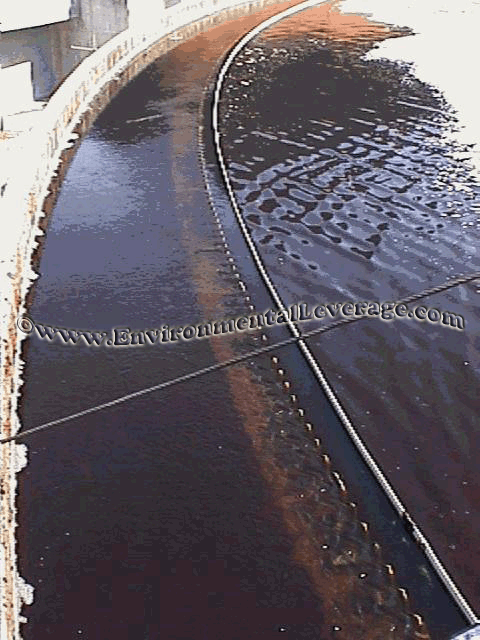 Monitor
the flow through the secondary clarifier.
Monitor
the flow through the secondary clarifier.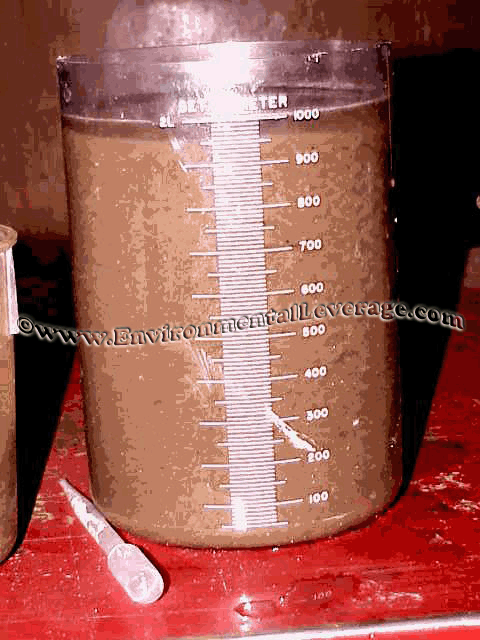
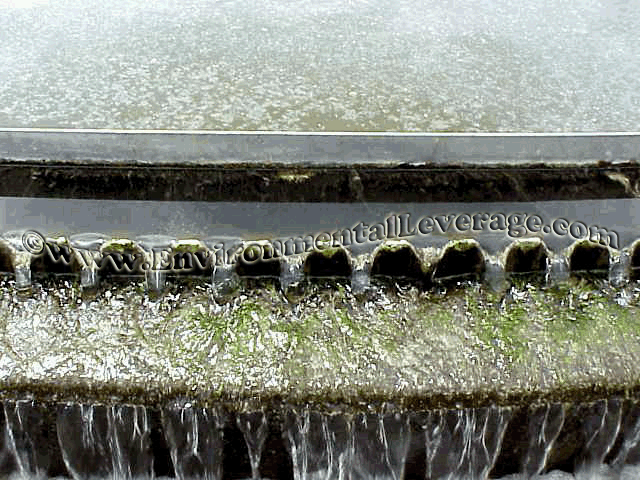
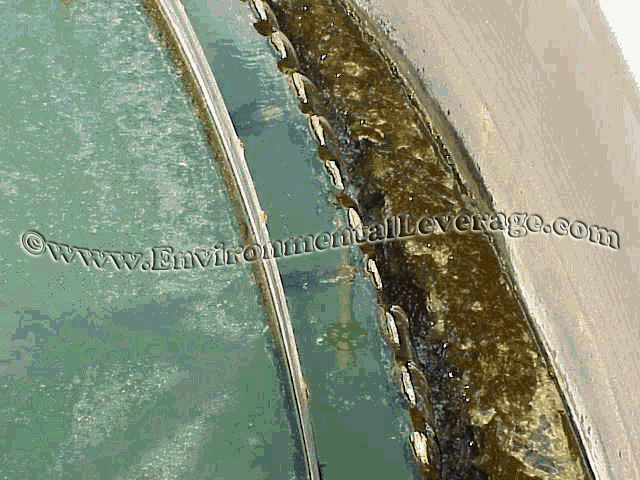

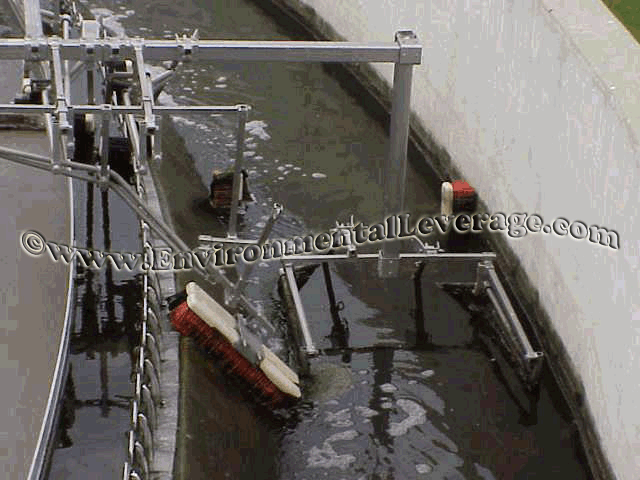 Maintain
the equipment per the manufacturer's instructions so that process
performance will not be compromised by equipment malfunction or failure.
Maintain
the equipment per the manufacturer's instructions so that process
performance will not be compromised by equipment malfunction or failure.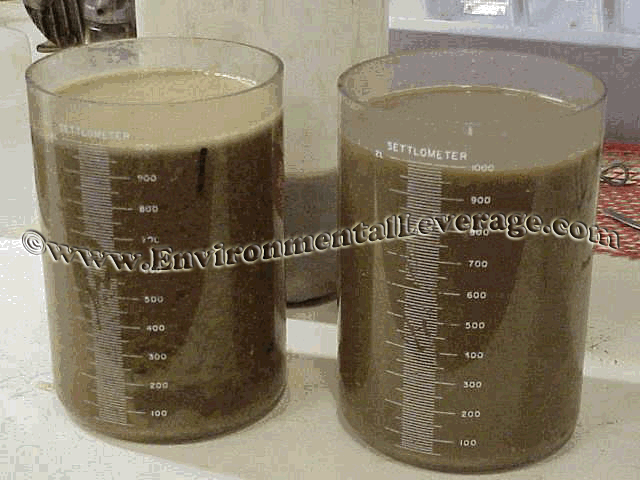 Monitor
the settleability of the influent solids.
Monitor
the settleability of the influent solids.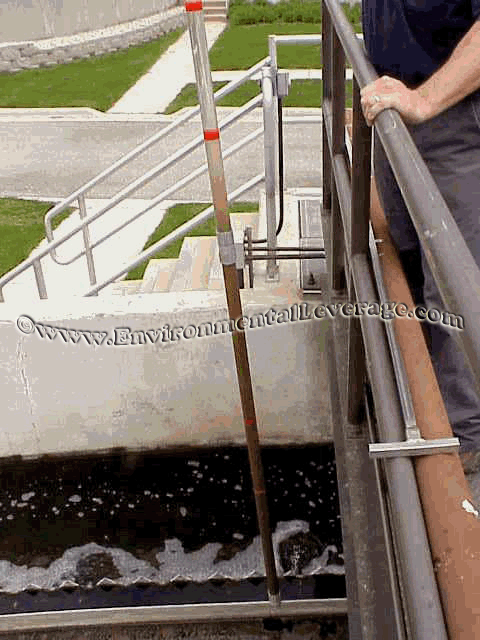 Using
the Sludge Judge as a way to measure depth of bed
Using
the Sludge Judge as a way to measure depth of bed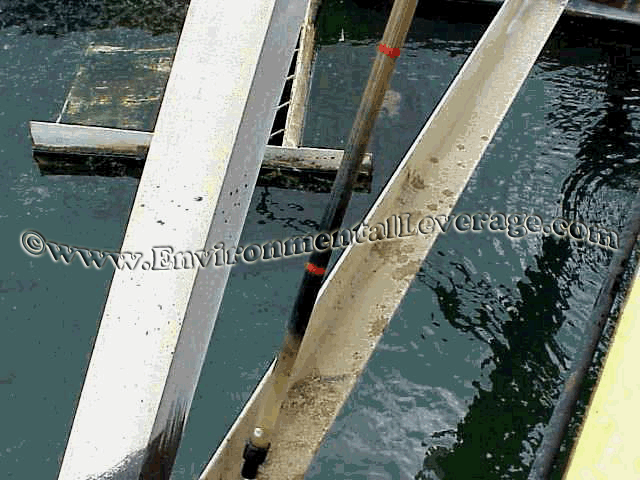 to be drawn off the bottoms, which impacts the returns of biosolids to the
aeration basins. Holding solids in the clarifier too long generates systems
conducive to filamentous growth or floating sludge or foaming, as the air,
nutrients and proper conditions for growth are changed.
to be drawn off the bottoms, which impacts the returns of biosolids to the
aeration basins. Holding solids in the clarifier too long generates systems
conducive to filamentous growth or floating sludge or foaming, as the air,
nutrients and proper conditions for growth are changed.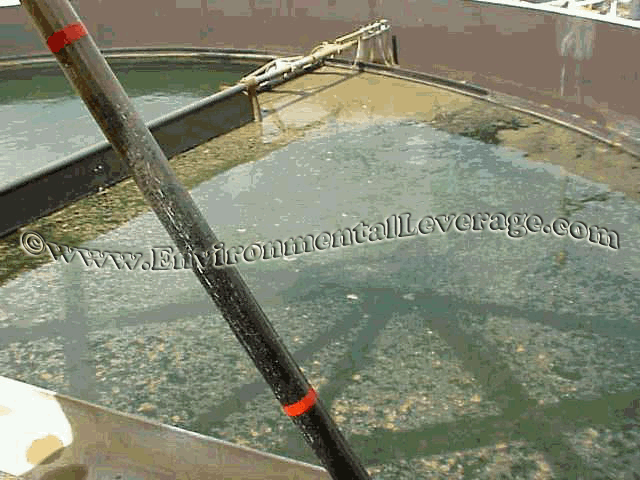 If
you are running a high F/M and have many amoebae and flagellates, you
probably do not want to increase wasting. If instead, you have a ton of
worms and rotifers and do not need to keep a very old sludge age due to
nitrification or hard to degrade compounds, you need to increase wasting for
a short time. Either way, the solids are being held too long in the
clarifier and need to be moved somewhere!!!
If
you are running a high F/M and have many amoebae and flagellates, you
probably do not want to increase wasting. If instead, you have a ton of
worms and rotifers and do not need to keep a very old sludge age due to
nitrification or hard to degrade compounds, you need to increase wasting for
a short time. Either way, the solids are being held too long in the
clarifier and need to be moved somewhere!!!